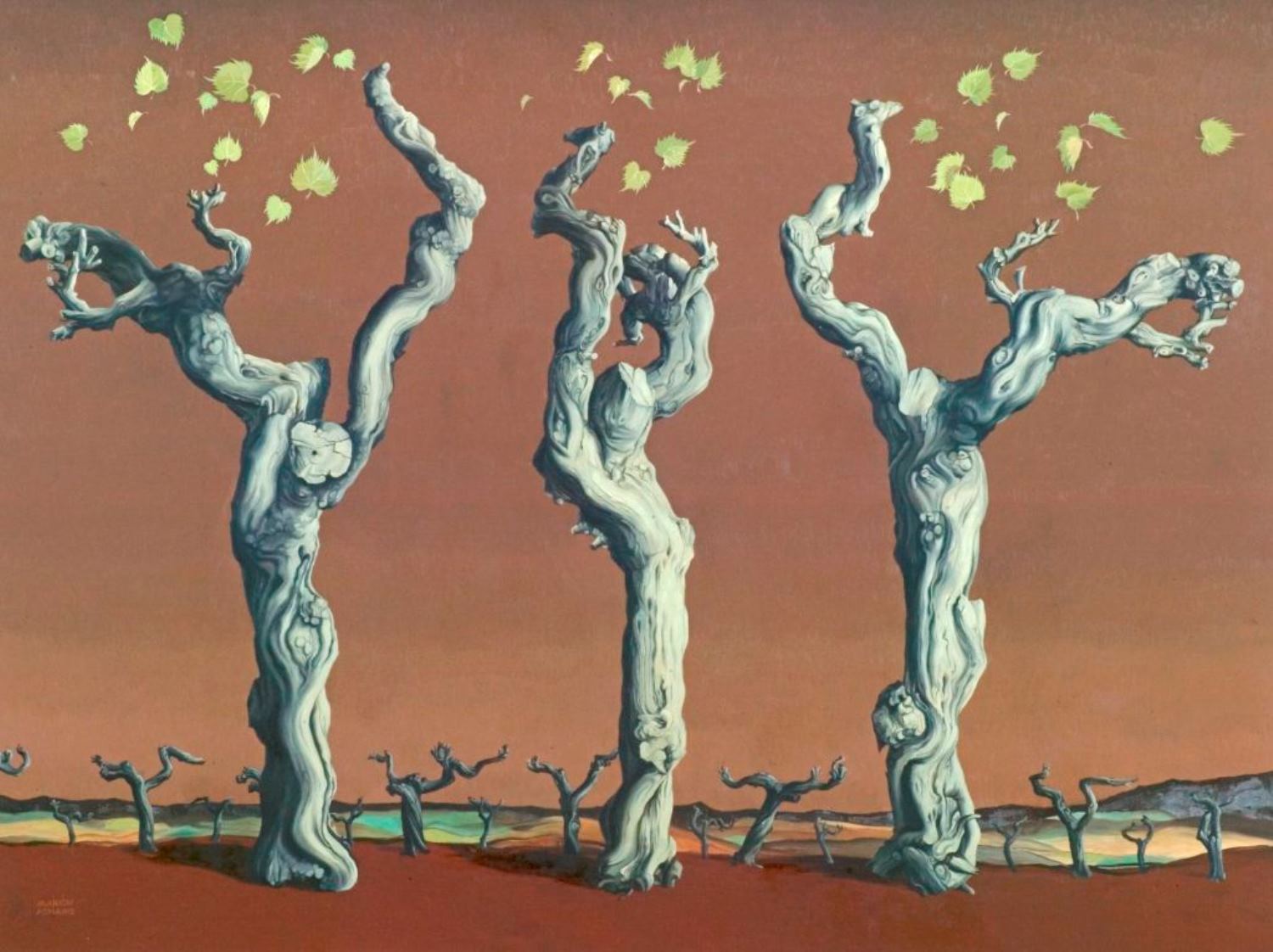Derby surrealist artist Marion Adnams is inspiration for new display at Derby Museum and Art Gallery

Marion Adnams was born in Derby in 1898 and remained there, for the most part, until her death at the age of 96 in 1995. During her long life, she forged a reputation as a painter of deeply distinctive and dream-like visions inspired by the Surrealist movement. Although she worked full time as an art teacher, as well as caring for her mother, Adnams exhibited her work in London and many regional art galleries from the late 1930s. Today, examples of her paintings and drawings can be found in numerous public collections including the National Galleries of Scotland and Manchester Art Gallery.
Derby Museums is the home to the UK’s largest collection of Adnams’ work, recently enhanced by the generous donation of her personal archive, courtesy of her estate. The collection features items as diverse as family photographs, books, and postcards, through to sketchbooks, paintbrushes, paintings, and collected objects such as shells and vine roots. The new display, Marion Adnams: Into ‘the Enchanted Country’ aims to present a comprehensive and rounded picture of Adnams and her accomplishments. The display is the first step towards creating a space that highlights the breadth of the work of this often overlooked artist. Future additions to the display will include items from Adnams’ personal archive, such as rarely before seen objects that she collected and used as a reference in her work.


Images: (left) ‘Alter Ego’, by Marion Adnams, 1945, oil on panel. © Derby Museums Trust and Artist’s Estate (right) ‘For Lo, Winter is Past’, by Marion Adnams, 1963, oil on board. © Derby Museums Trust and Artist’s Estate.
The gallery will allow visitors an insight into Adnams’ process, which often began with natural objects she had found during walks, or from pieces she had glimpsed on a visit to Derby Museum and Art Gallery. Adnams would study these objects closely, making numerous drawings, before incorporating them into paintings. It was at this point, she later explained, that they took on a surreal and mysterious life of their own as she played with their scale and setting. She described this transformation as a sort of resurrection of dead and inanimate objects.
For Adnams, time for painting was squeezed around teaching and caring for her ageing mother. She later described the process of painting as an escape into what she called ‘the Enchanted Country’. Tragically in 1968, just eight years after retiring, she began to lose her sight and was forced to give up painting completely. Today, her work is in greater demand than ever for exhibitions and her popularity is increasing as a result.
Marion Adnams’ work continues to influence other artists and designers in the present day, such as celebrity milliner Stephen Jones, who is known for his modern millinery styles, dressing famous faces from Rihanna to Diana, Princess of Wales. Jones was inspired by Adnam’s work for a series entitled Drifting and Dreaming; a collection of hats for Ascot in 2011. Jones commented Adnams’ ‘essentially English paintings have a bizarre and charming femininity’.
Lucy Bamford, Senior Curator of Art at Derby Museums, said “With our new gallery, we encourage visitors to trace the development of Adnams’ ideas for paintings, many of which sprang from objects foraged on walks or specimens glimpsed on visits to the Museum and Art Gallery, alongside a broader interest in the natural world that she inherited from her parents. Drawings show how she reimagined these encounters, playing with scale and contrast, before the realisation of her surreal visions in paint. She described this process in language reminiscent of taking a journey; of ‘venturing into the Enchanted Country’.”
“Our new Adnams’ gallery is nestled between a display dedicated to fellow Derby artist, Joseph Wright, and our Nature Gallery. We hope to entice visitors to discover this unique and deeply unusual artist for themselves.”
Marion Adnams: Into ‘the Enchanted Country’ is now on display at Derby Museum and Art Gallery, free to enter, donations welcome.
logo-accredited-museum
logo-arts-council
logo-derby-city-council
logo-designated-outstanding-collection
 English_made_possible_logo_black_JPEG
English_made_possible_logo_black_JPEG VAQSA_COLOURplaqueCMYK
VAQSA_COLOURplaqueCMYK MOTY2022_Small_finalist_rgb_Black
MOTY2022_Small_finalist_rgb_Black


